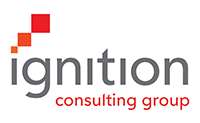Pricing Hacks Inspired by Behavioral Science
March 31, 2022

Should you aim high or low when a client asks you to “guesstimate” the price of a project? Most of us know the answer to this question, and it’s thanks to the world of behavioral economics that we have insights into the principles of pricing psychology.
Many agencies already leverage insights from behavioral science to inspire behavior change among consumers (stop smoking, start recycling), but have yet to use these principles to their own advantage when structuring compensation agreements. Decades of study and experimentation in behavioral economics have produced a set of immensely useful guidelines that can help professional service firms get paid what they’re worth. Following are seven such principles you can apply starting tomorrow.
The price that gets named first and earliest in a conversation becomes the reference point against which all other prices will be compared. This is known as anchoring, one of the foundational principles of pricing psychology. In effect, the more you ask for the more you get. Wendy’s doesn’t expect to sell many triple burgers, but it’s on the menu to make the double burgers look more reasonably priced.
There is no such thing as absolute value. Buyers need to be able to compare and contrast in order to judge pricing. This is the principle of relativity and why sellers should always provide pricing options. While people can be sensitive to differences in price, they rarely know what things are supposed to cost. William Poundstone, author of the bestselling book Priceless, calls this “price cluelessness.”
What’s scarce is valuable. We can see scarcity bias in action when grocery stores advertise a limit on the number of cans of soup an individual can buy. The result is that the store sells more cans of soup, not less. Placing a time limit on an offer can have the same effect. The other aspect of scarcity is more obvious; ensure that your offerings are as singular and distinctive as possible. In professional services, the ultimate advantage is developing and offering a hard-to-find service or competency.
Framing is the practice of serving up your price in a way that makes the buyer see it differently. The easiest way to change your price is to reframe your offering. What used to be a 50-cent cup of coffee is more than $4 at a Starbucks store, because they reframed their coffee from a commodity to an experience. Similarly, many of us are willing to pay premium prices in a bar at an expensive hotel, even though the same bottle of beer is available at the corner market for one-third the price.
The pain we feel from a loss is greater than the happiness we feel from a gain, even if the two are essentially equal in magnitude. This is loss aversion bias, which teaches us that buyers will work harder to keep a dollar than to get a dollar. When presenting and discussing pricing, gains should be separated, whereas losses should be consolidated.
Signaling is about the context surrounding how price and value are presented. It’s not only the message, but the messenger that communicates value. Wedding invitations could be sent by email or text, but instead are mailed in embossed notes and gold-edged envelopes. How you dress and describe your offering has an immense impact on the perception of your price. Restauranteurs know that the same menu item can command hugely divergent prices depending on how the dish is named and described. Smart sellers are careful to focus on benefits, not features; the language of value in place of the language of cost. As Rory Sutherland postulates, “A flower is simply a weed with an advertising budget.”
And finally, one of the most counterintuitive learnings from the world of behavioral economics is the Pratfall effect. For both people and products, admitting weaknesses increases believability. Acknowledging flaws makes you, your company and your offering more credible and therefore more appealing. For decades, Avis has reminded us “We’re only number 2, so we try harder.” As behaviorist Richard Shotton notes, some of the most successful advertising campaigns of all time are based on this simple psychological insight. Admitting weakness is a tangible demonstration of honesty and therefore makes all your other claims more believable.
If your agency is still mired in the practice of counting your hours and sending the client a bill, you may feel that many of these principles are irrelevant. But if you’ve joined the growing ranks of firms who are adopting the principles and practices of modern pricing (a revenue model based on outputs or outcomes instead of inputs), these pricing hacks from the field of behavioral science can make a significant difference in your year-end margins. Let’s remember that just a 1% improvement in pricing can produce a 10%+ improvement in profits.
































